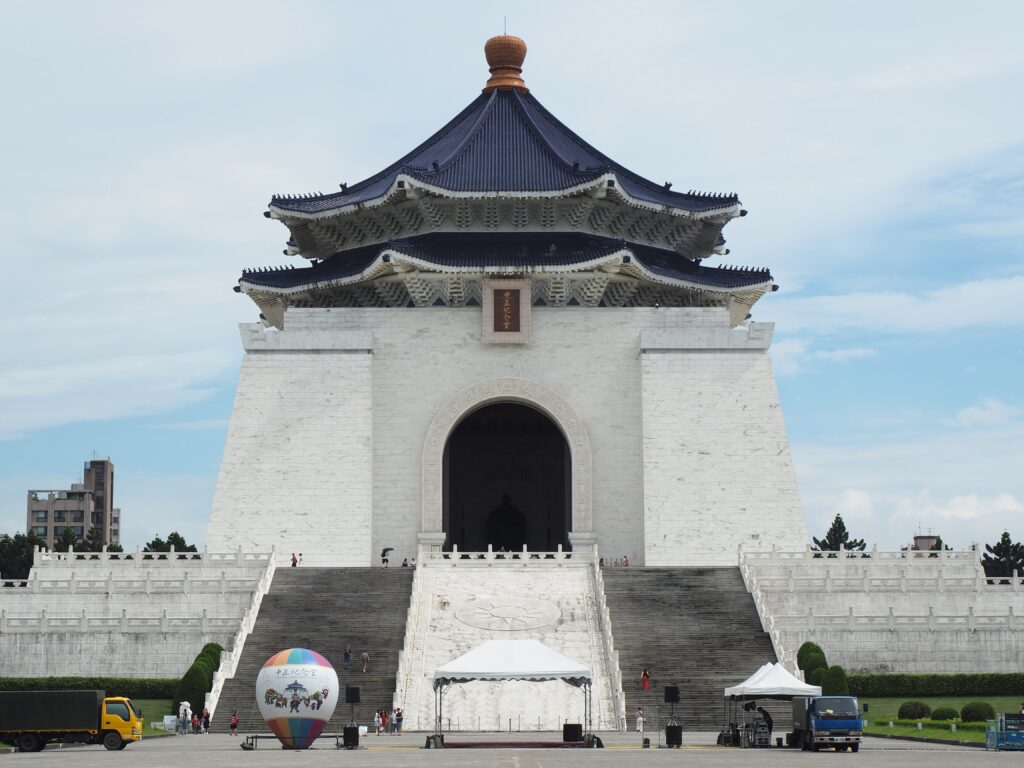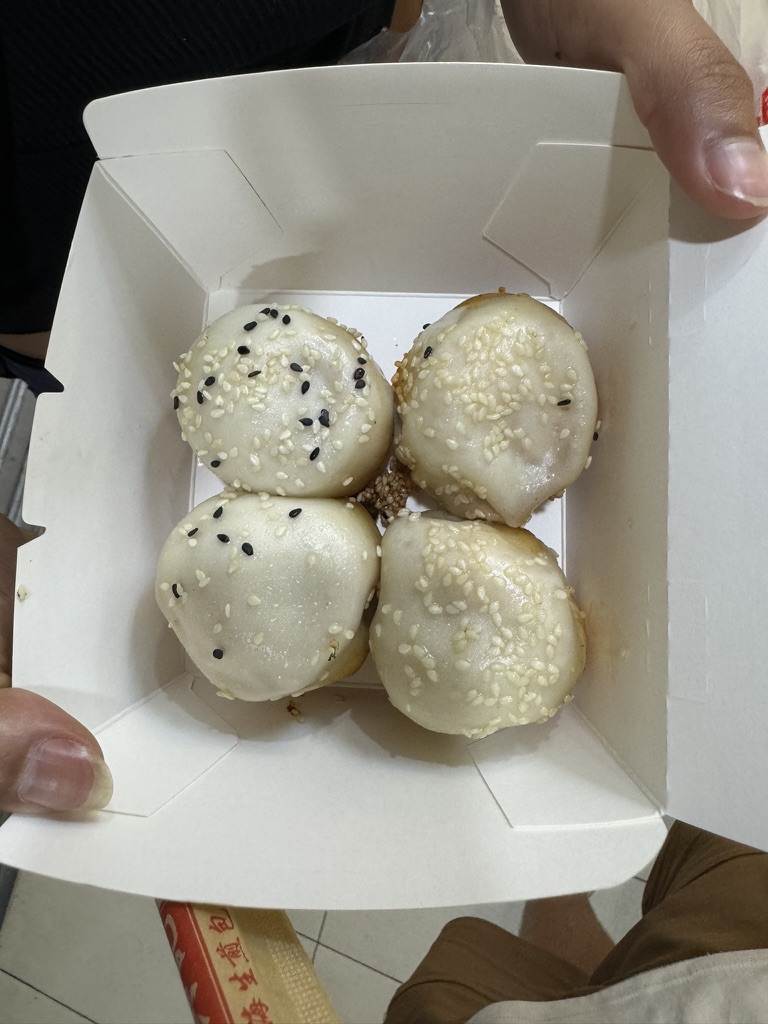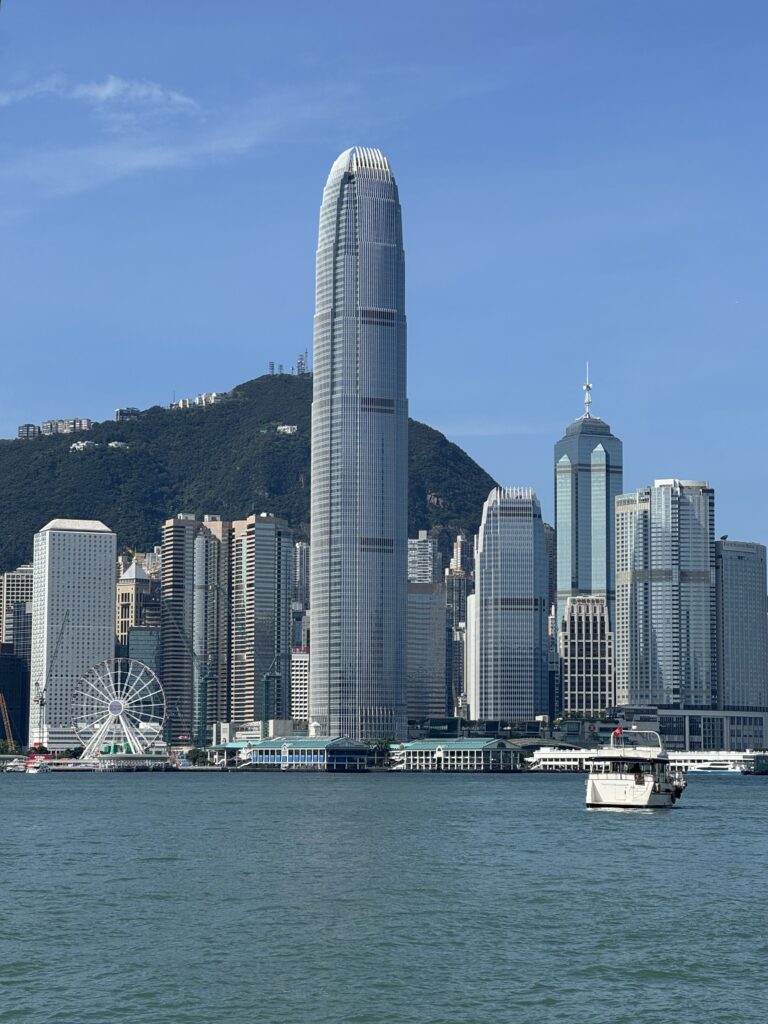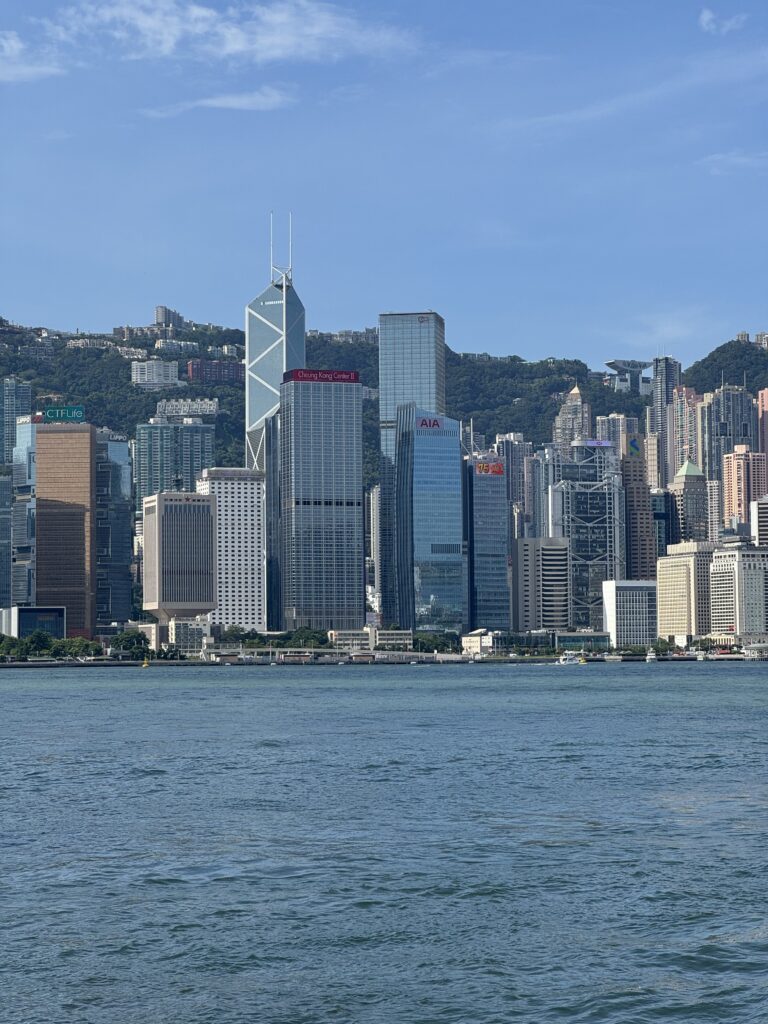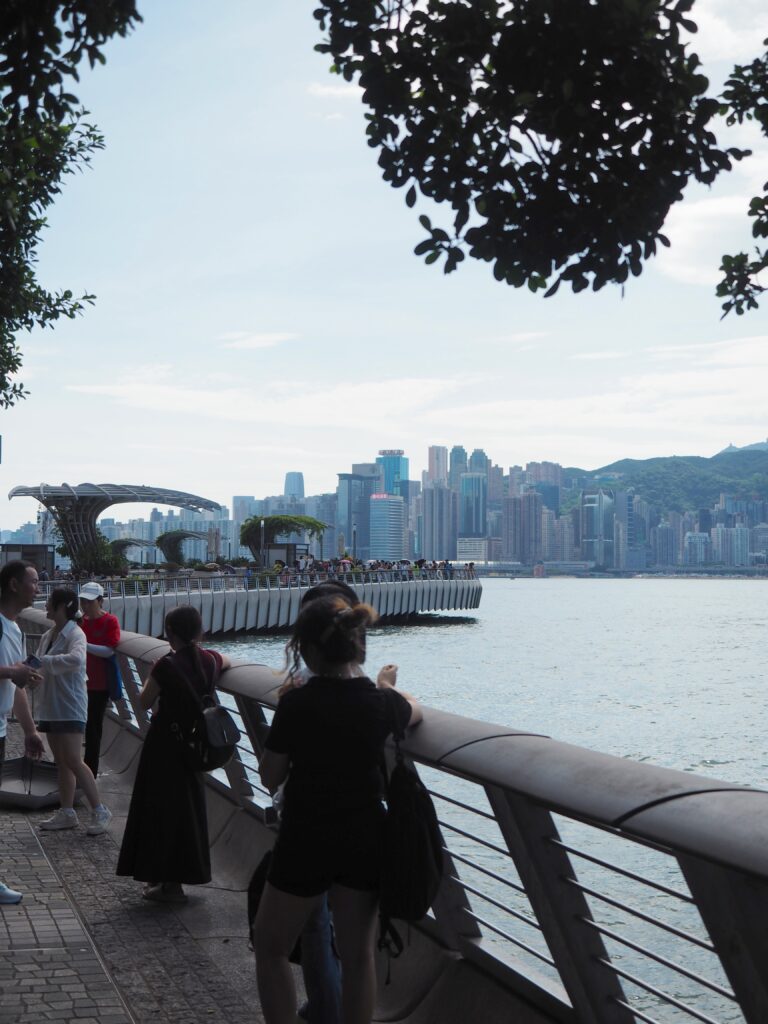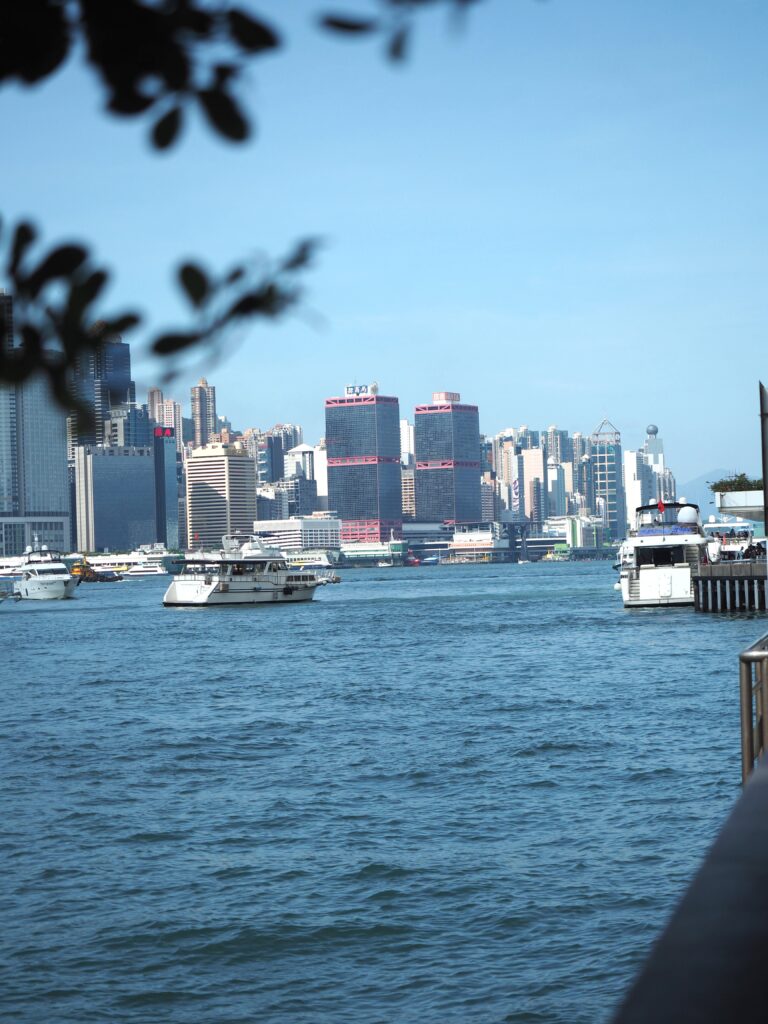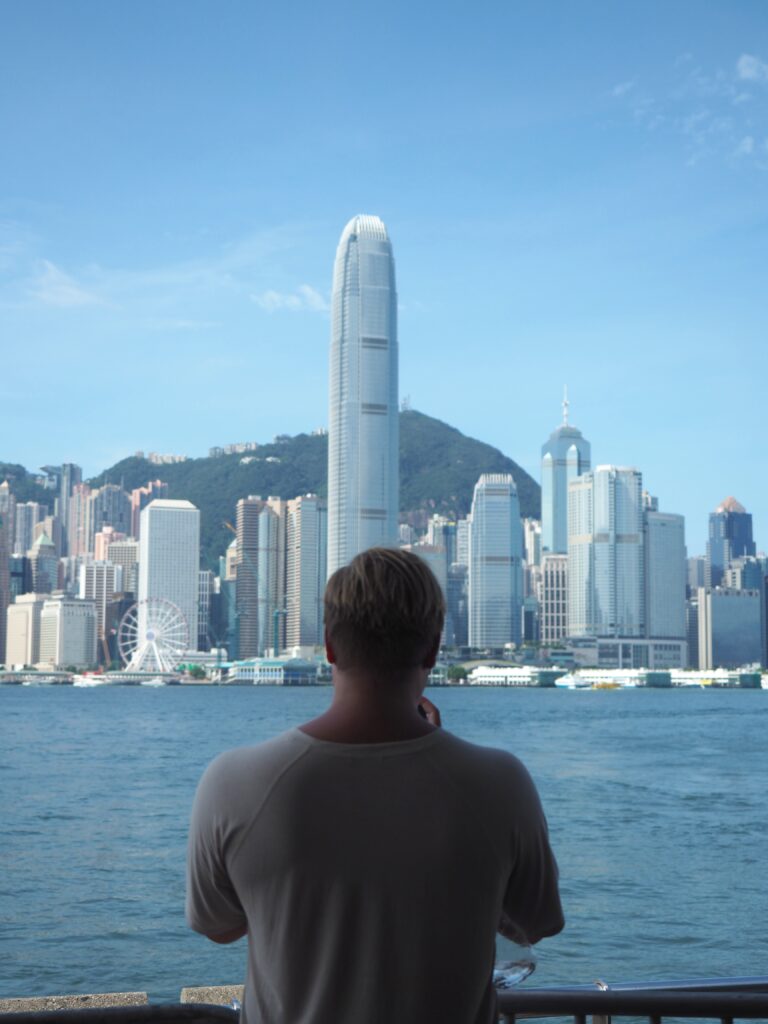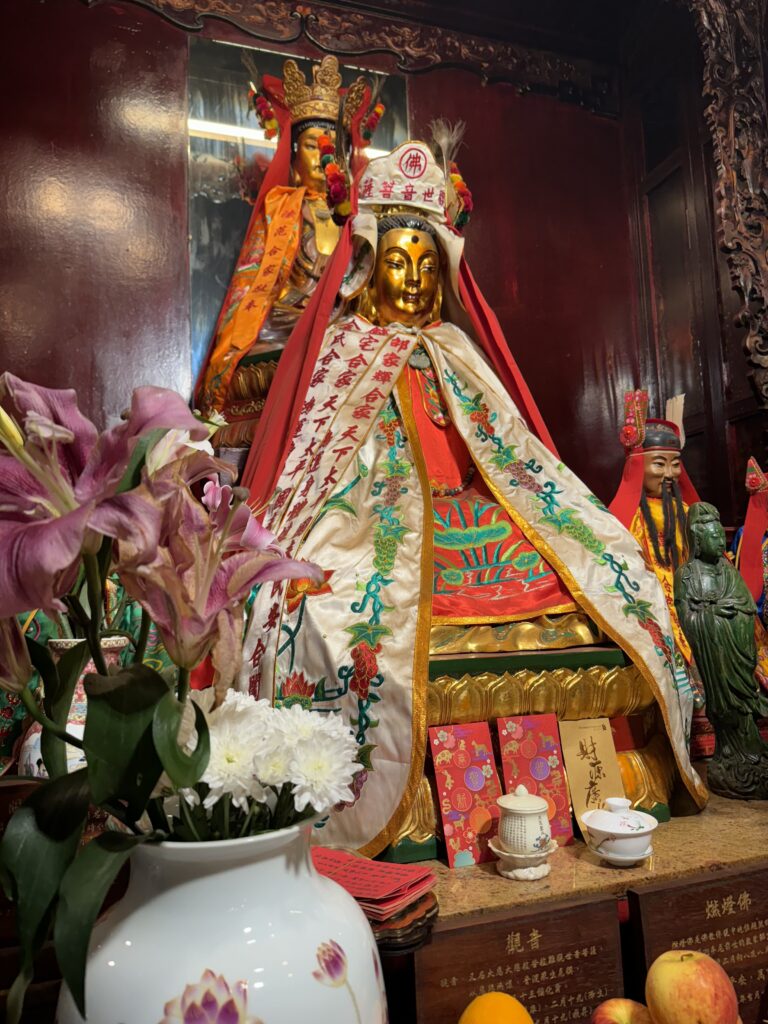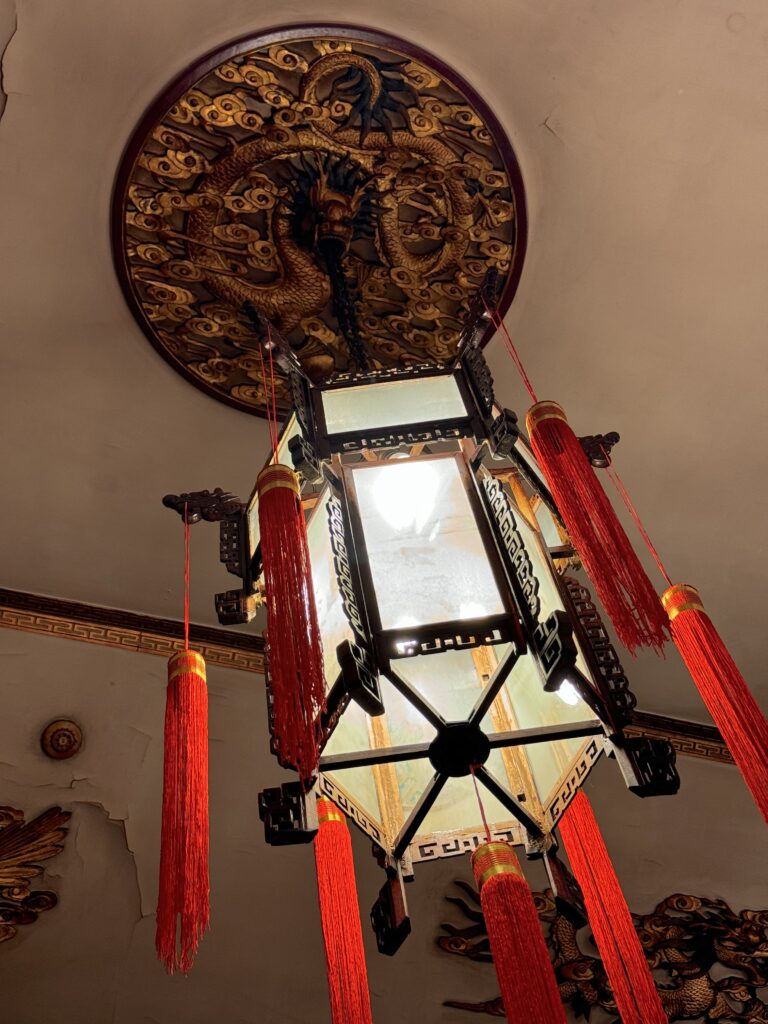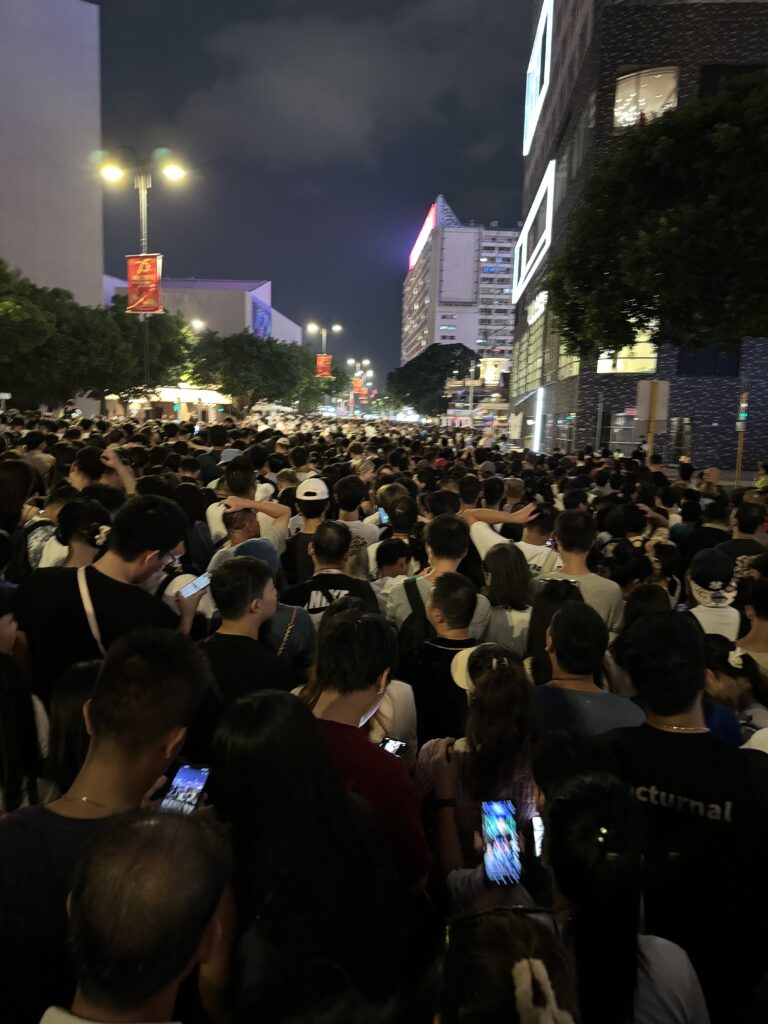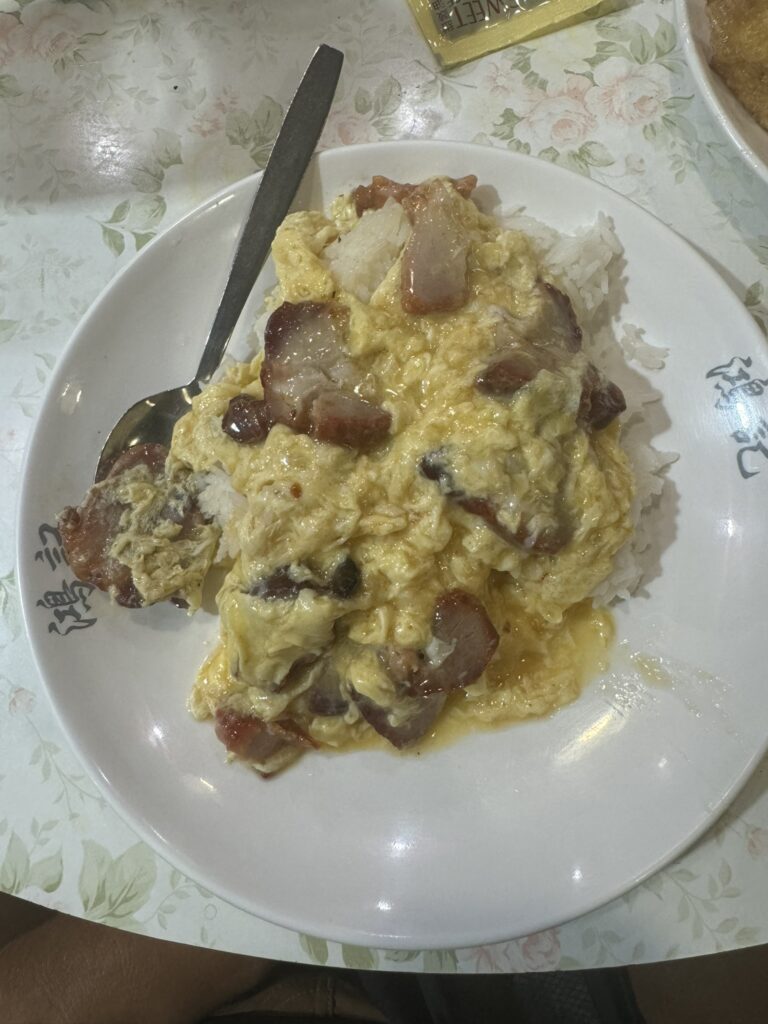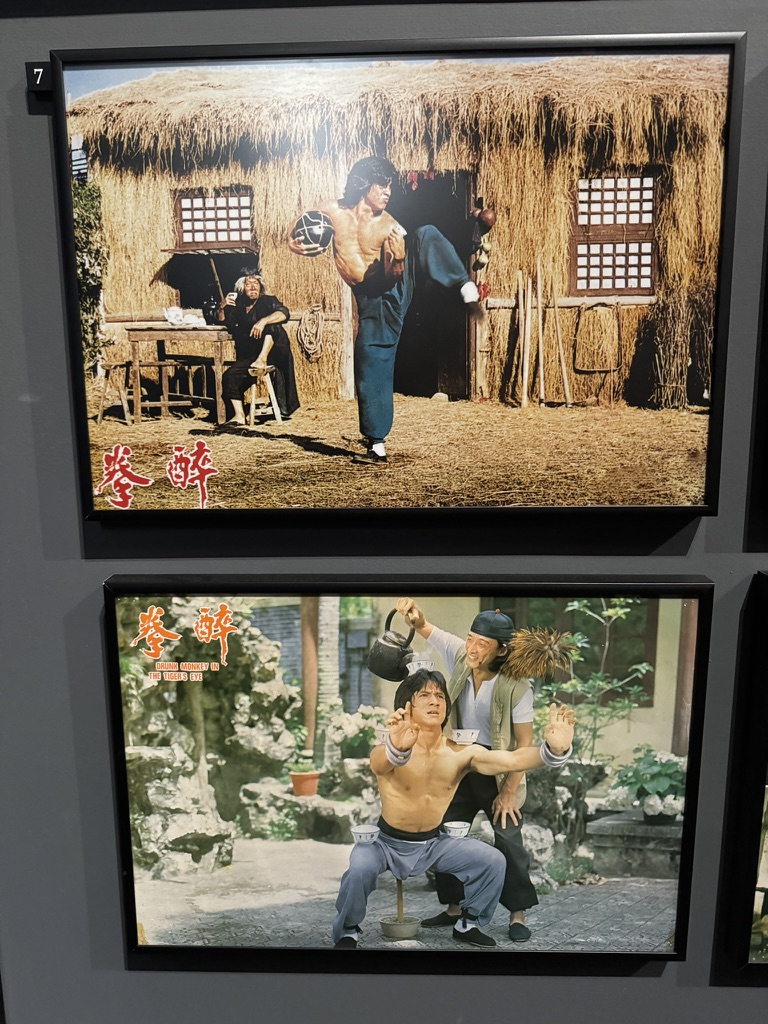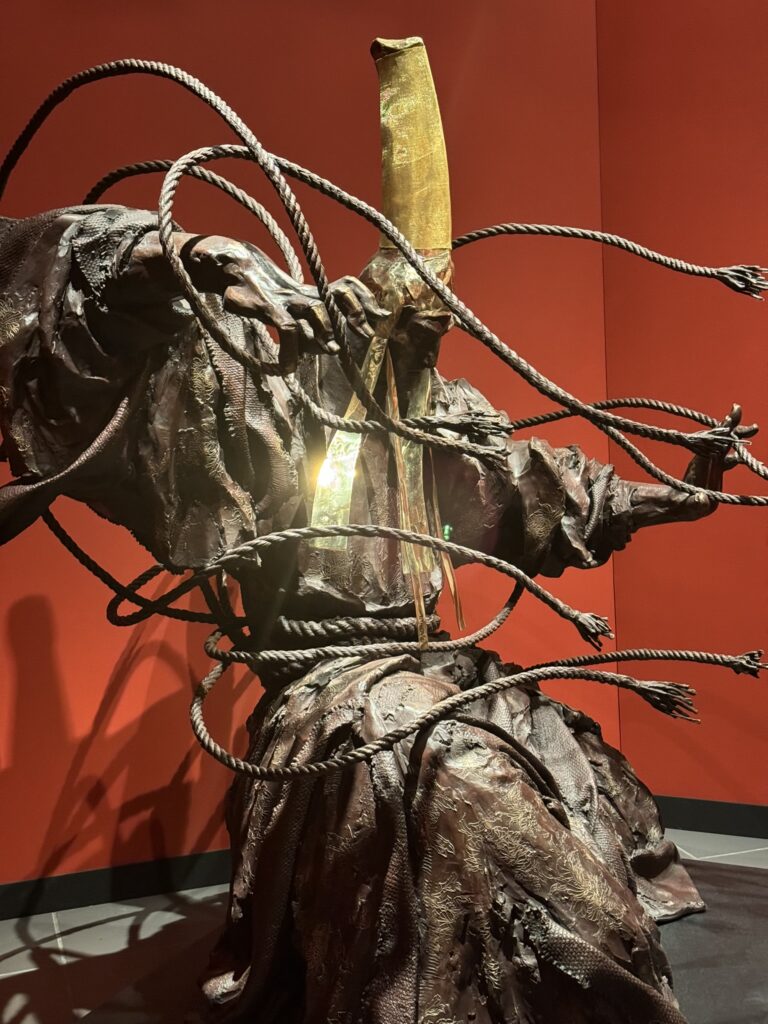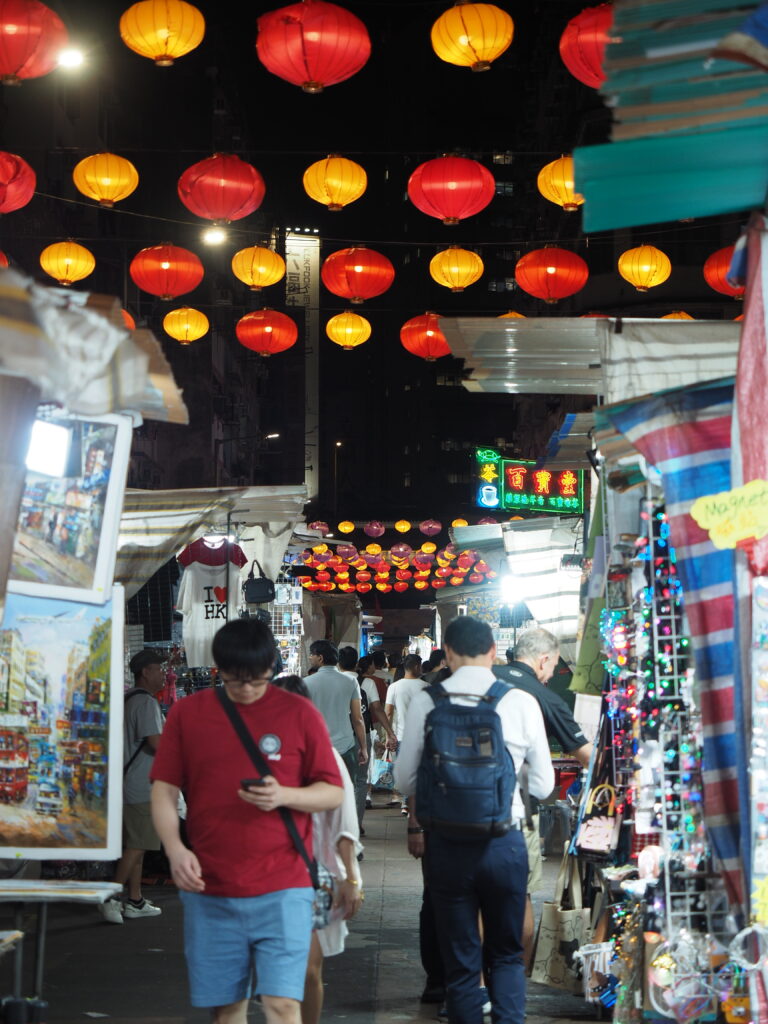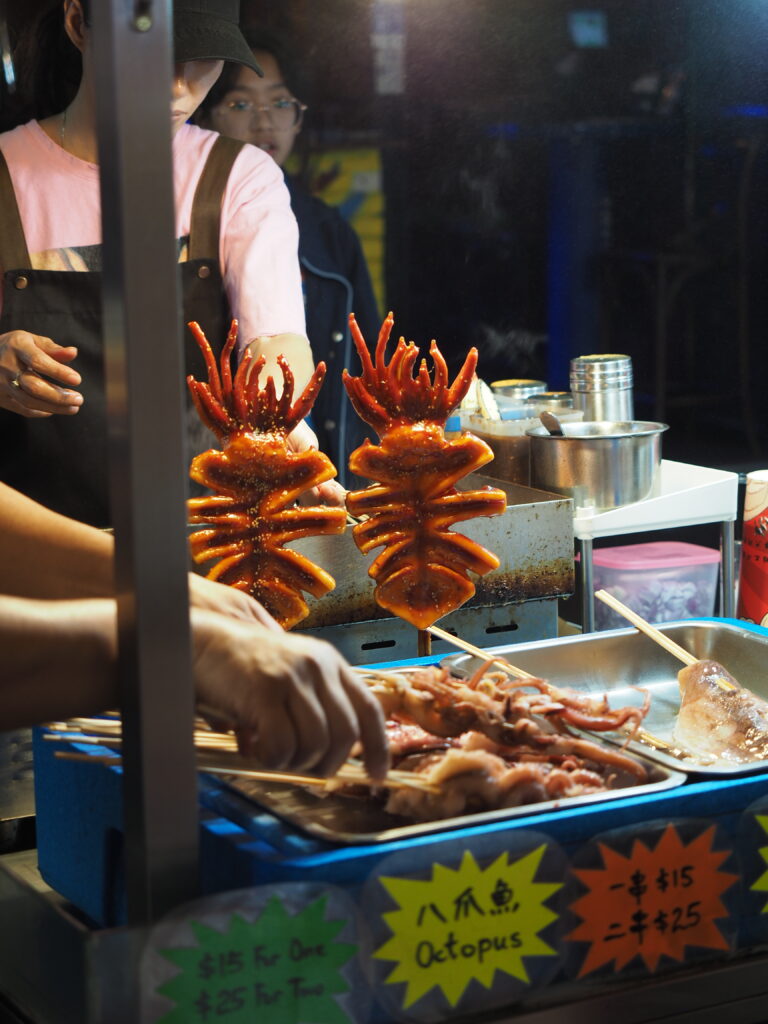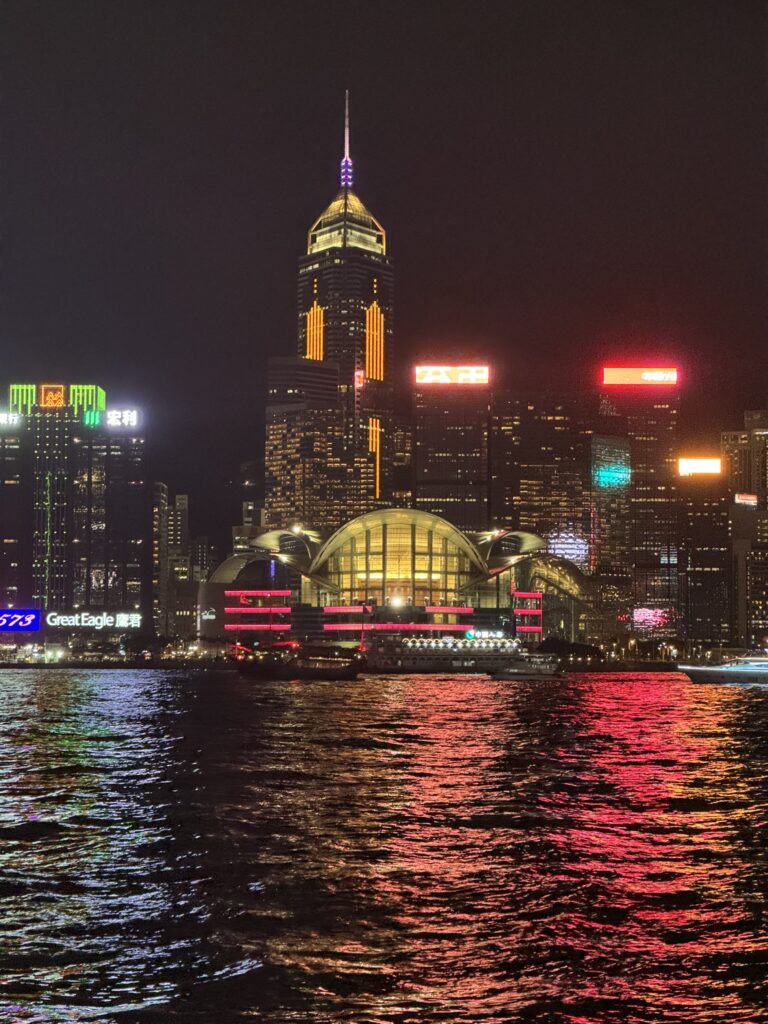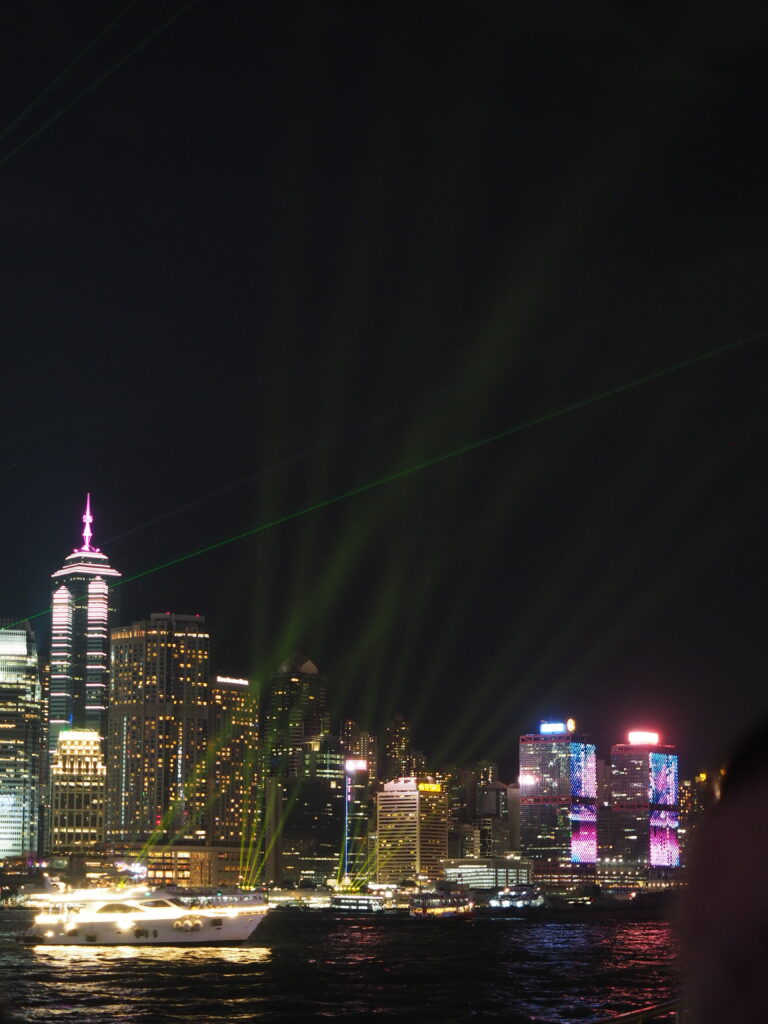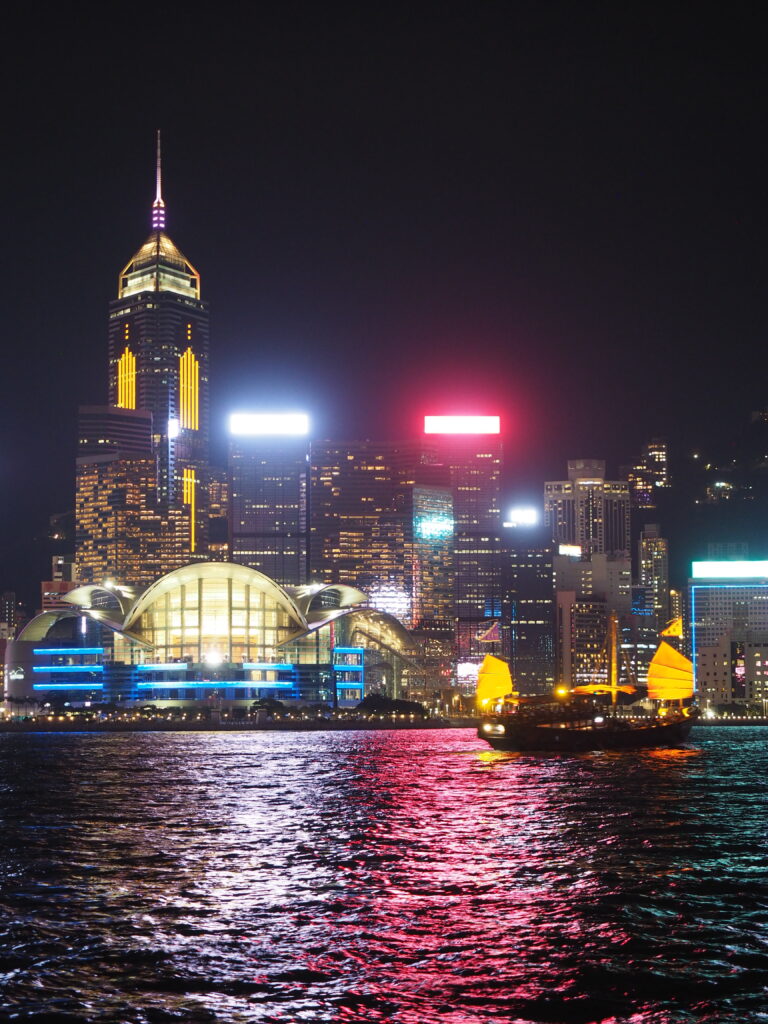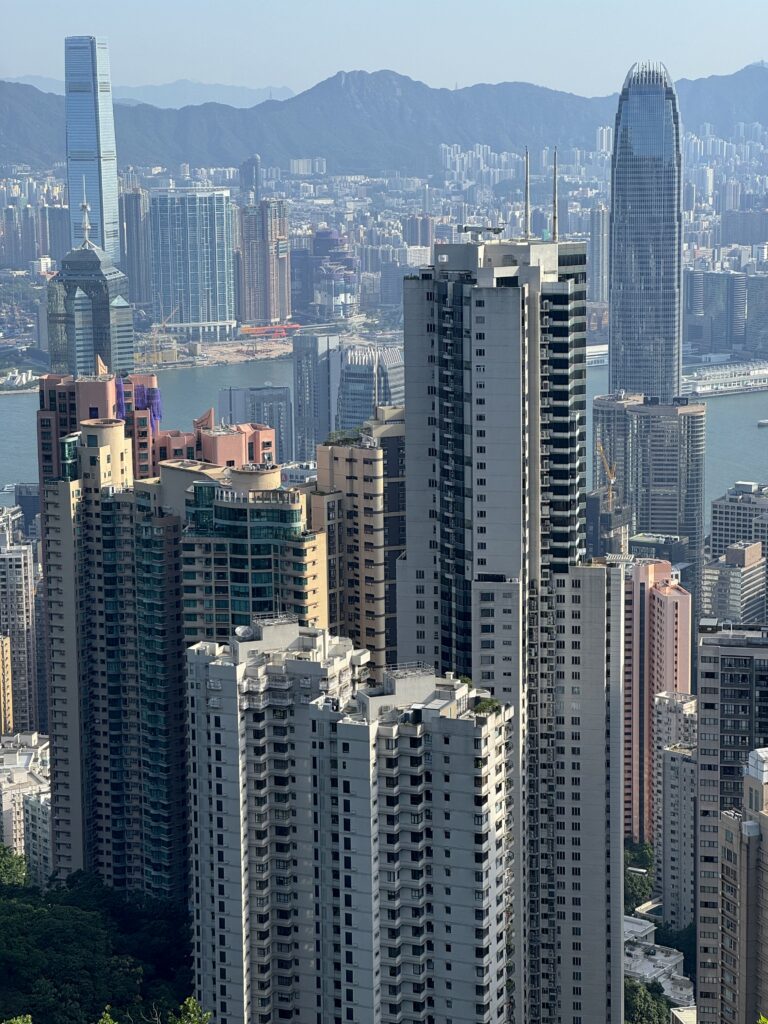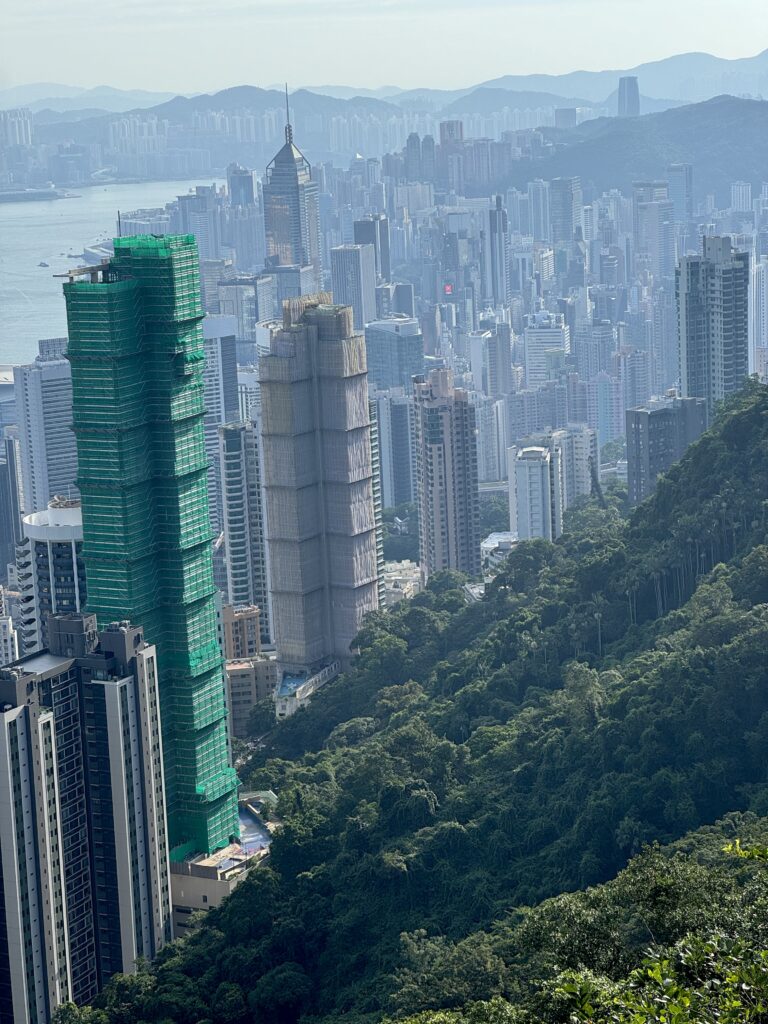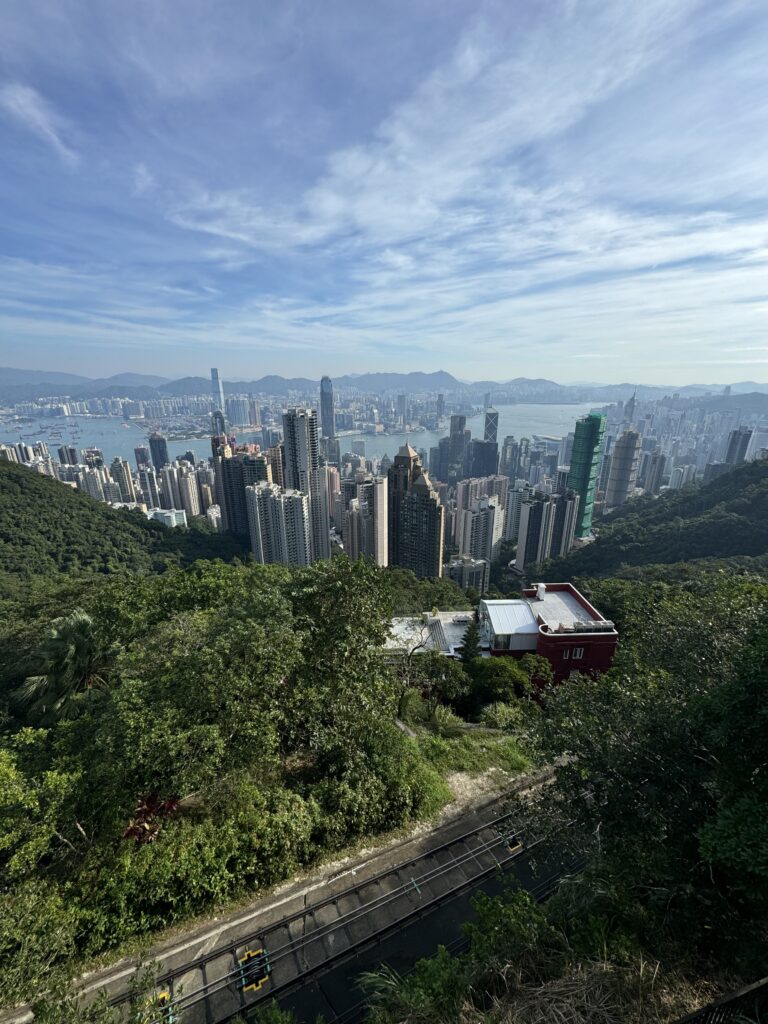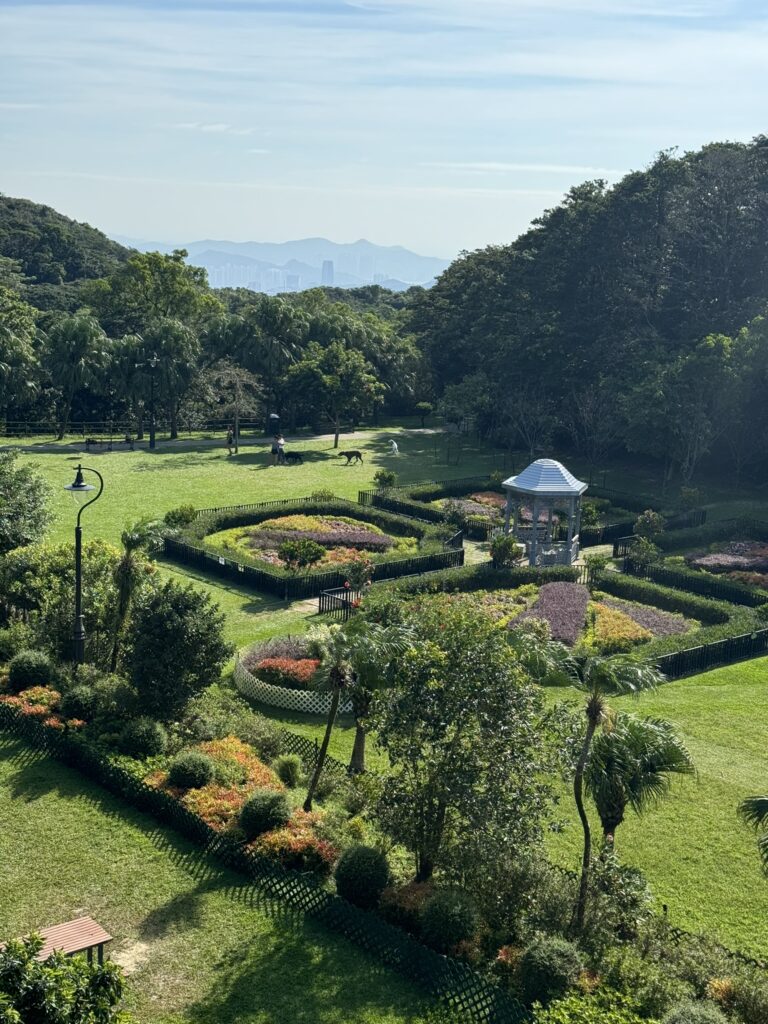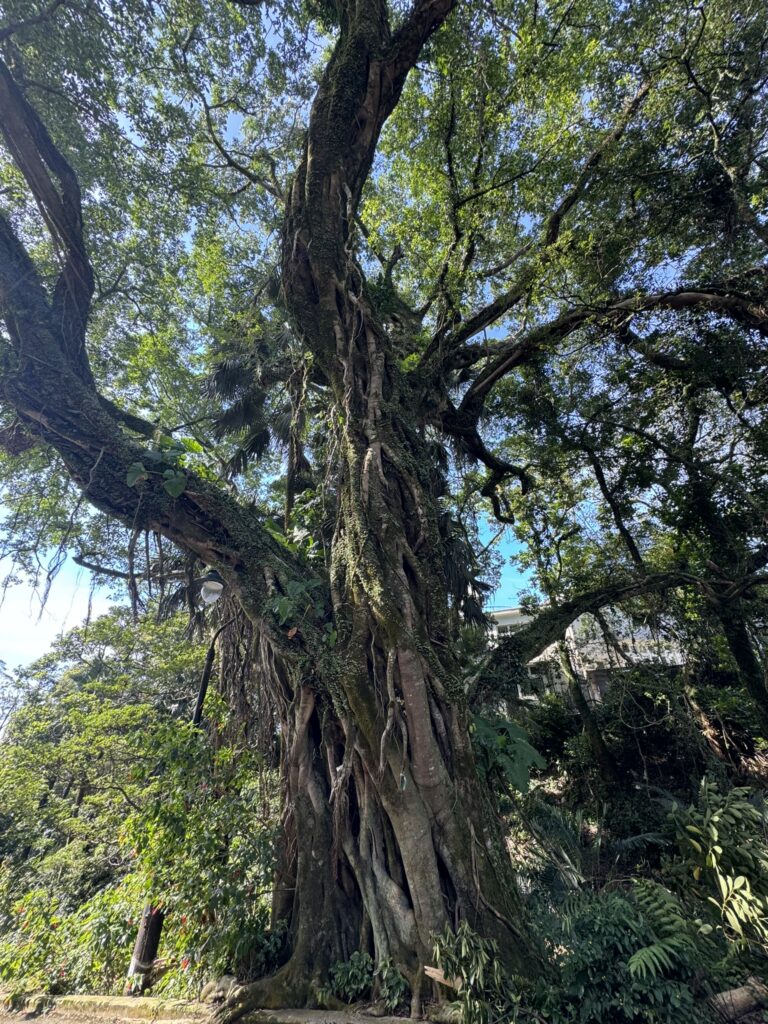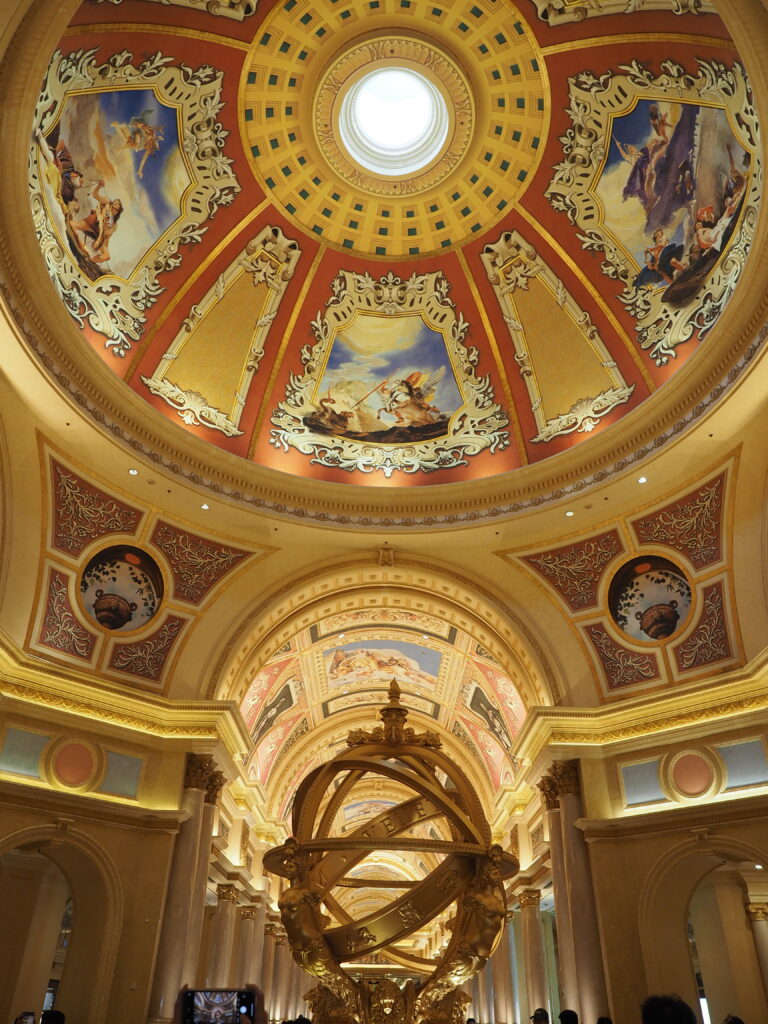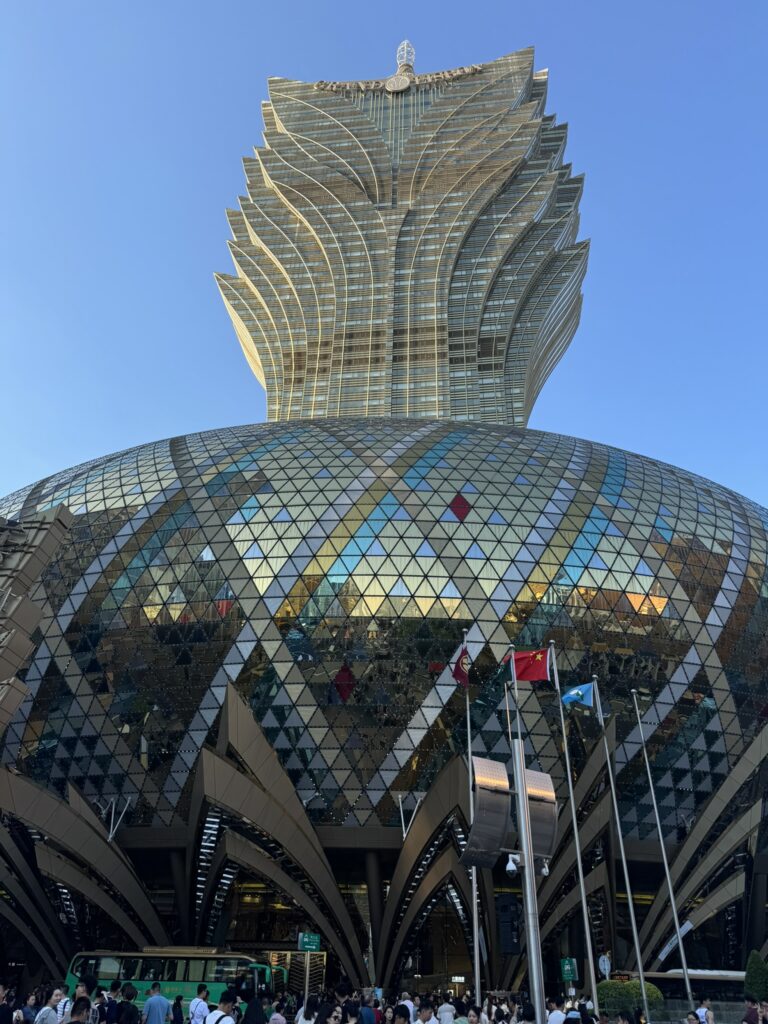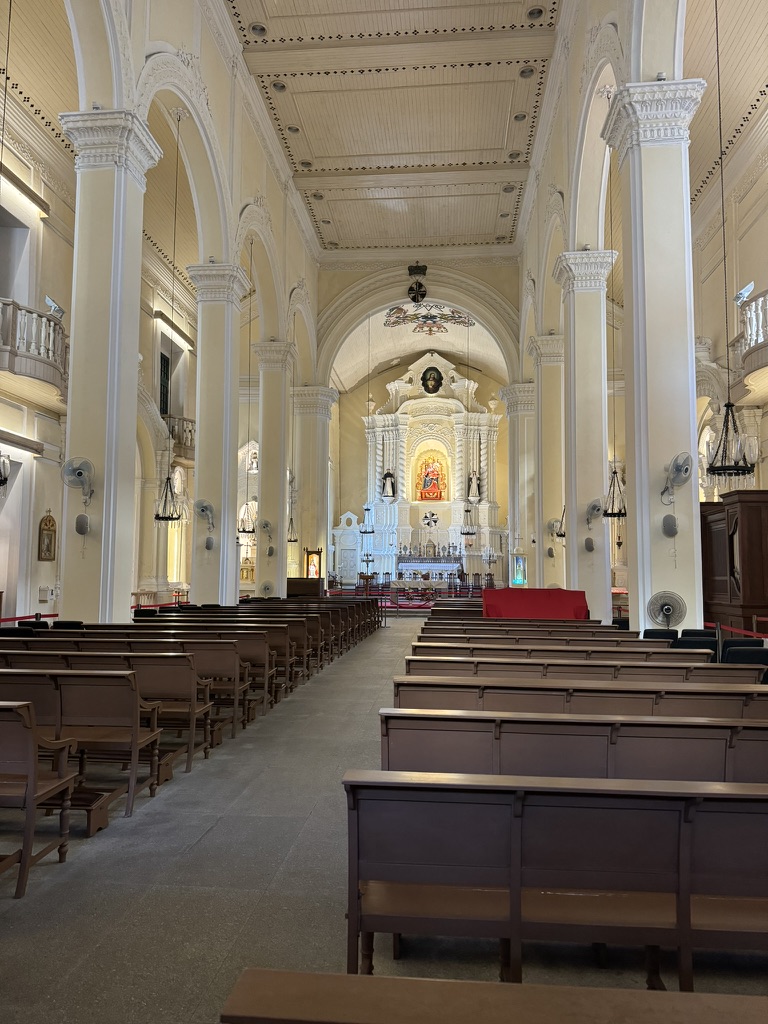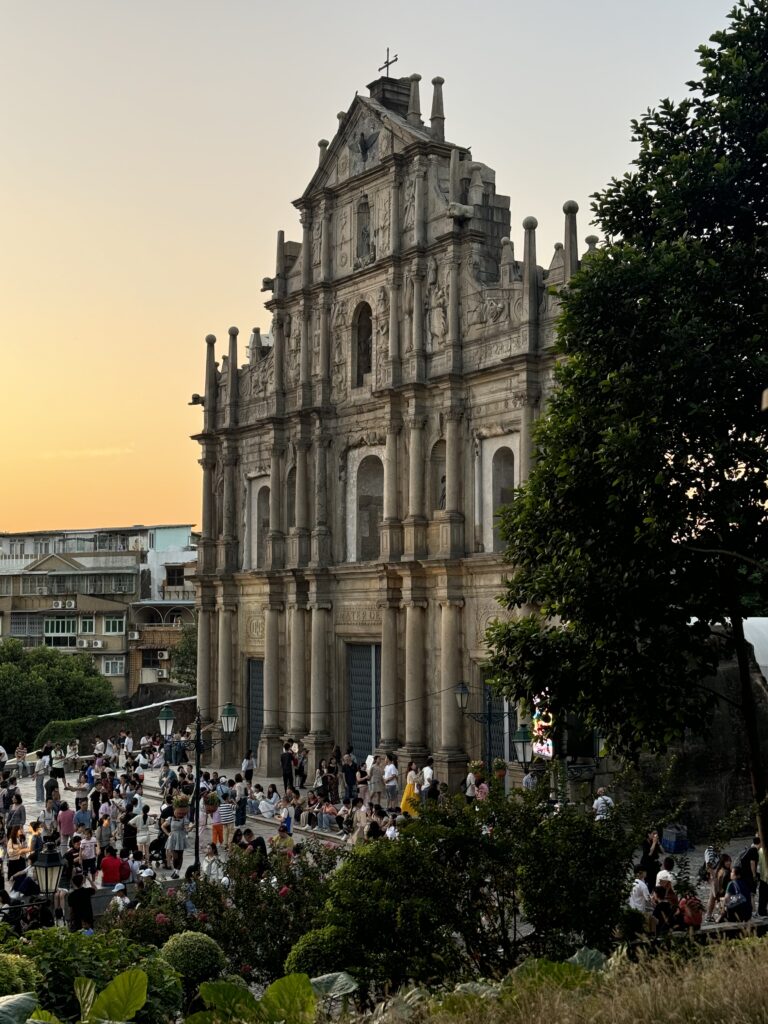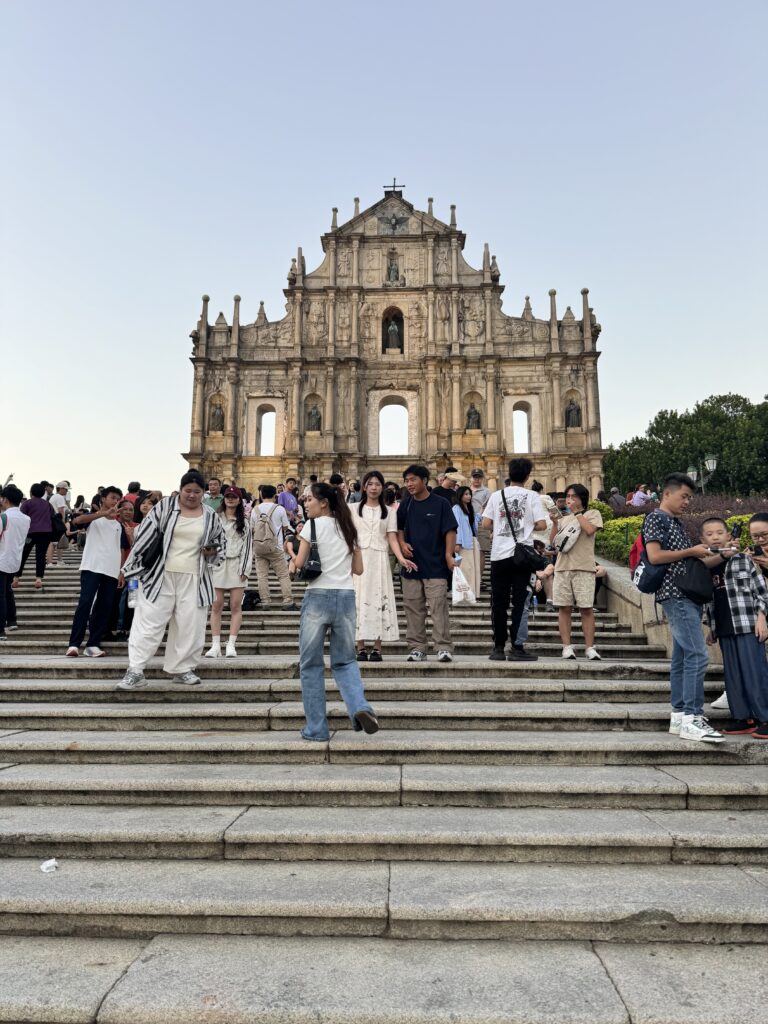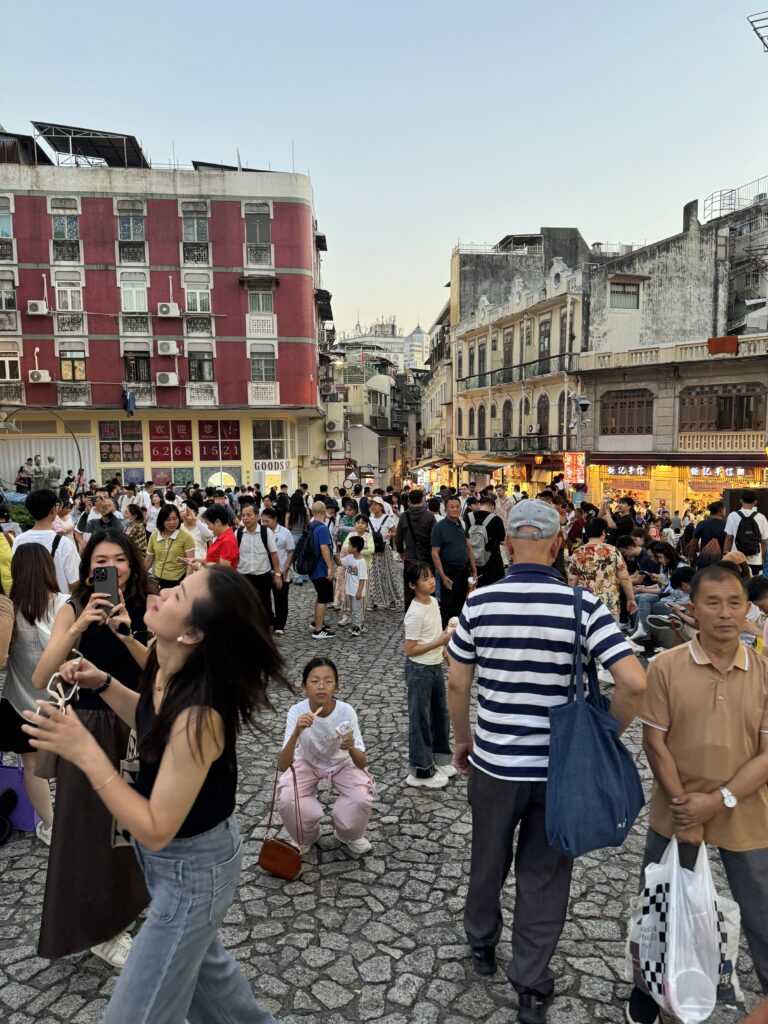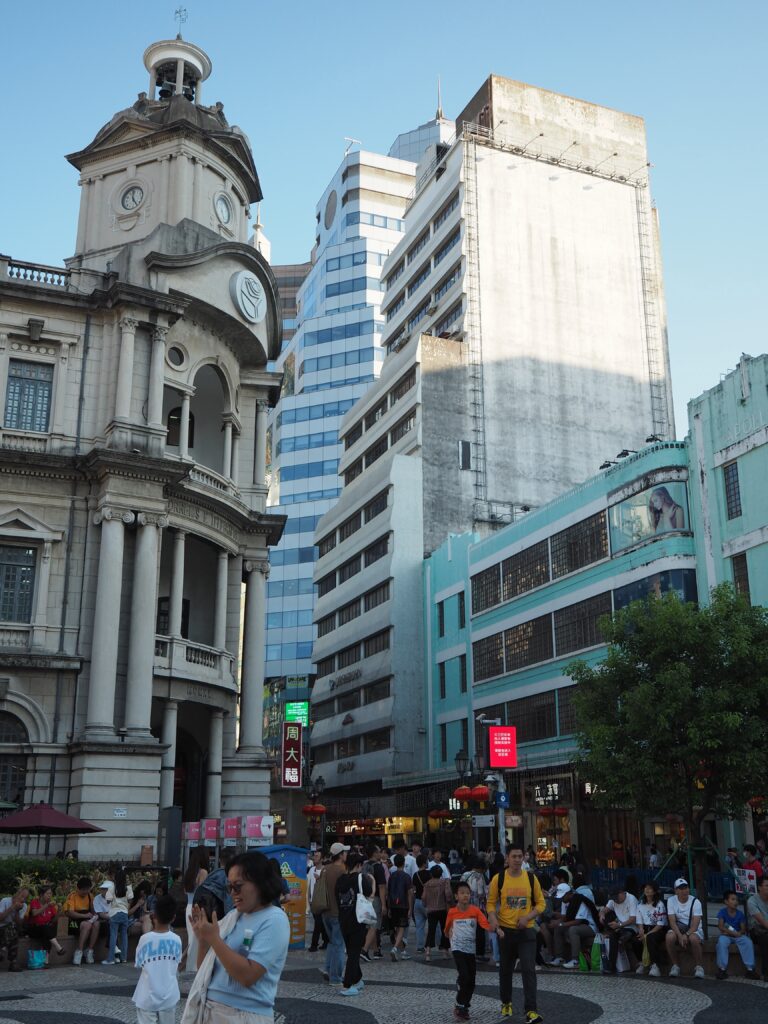Hong Kong
1 October 2024
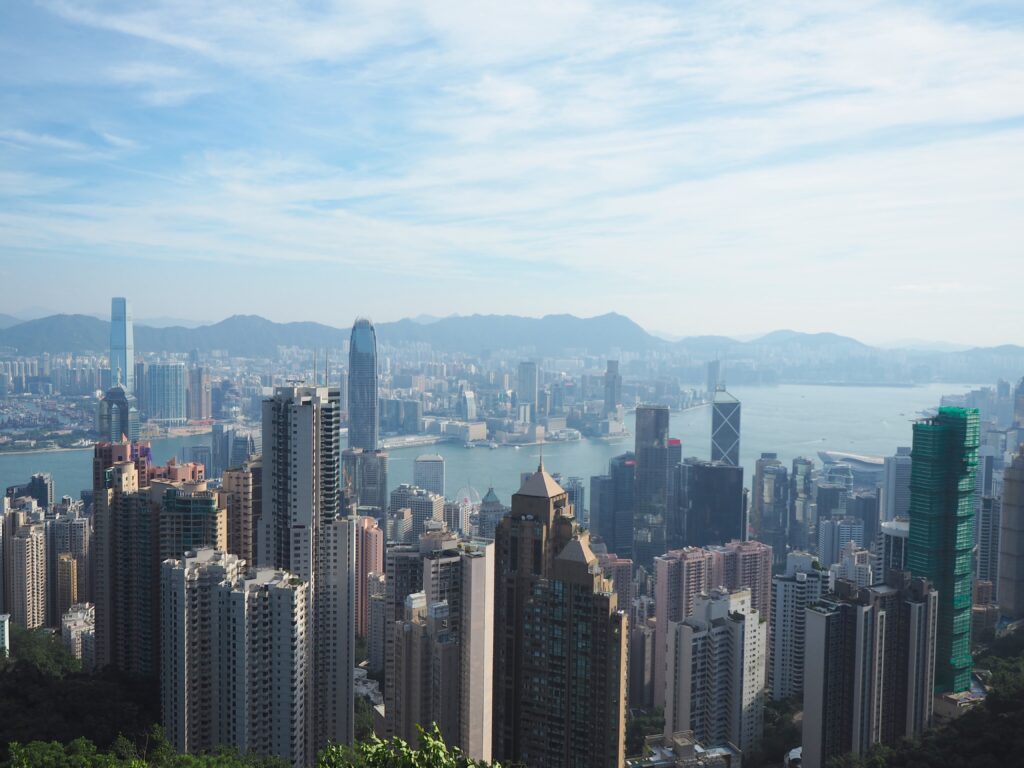
Hong Kong is a place of extremes. It boasts more skyscrapers than any other city in the world, yet tucked between them are centuries-old temples filled with swirling incense. It’s a city where you can find Michelin-starred dim sum or a cheap bowl of noodles from a humble dai pai dong. It’s also a place where space is a luxury—we quickly learned this when we checked into the smallest hostel we’d ever seen. Towering skyscrapers, neon-lit streets, and a fusion of East and West make Hong Kong something special.
Día 1
- Cheung Hing Kee Shanghai Pan Fried Buns
- Avenue of Stars
- Man Mo Temple
- People’s Republic of China 75th Anniversary Firework Show
We departed from Bali at 12:45 am. The flight to Hong Kong lasted around 4 hours, and I slept for 2 of those at most. Indi did not sleep at all. I realized I must have left my neck pillow and buff on the flight from Bali to Lombok, so my neck was killing me when I woke up.
We arrived in Hong Kong at 5:35 am, and customs went smoothly as usual. We bought an octopus card to use for public transport, then took the A21 bus to Kowloon, where our hostel was located. The ride was pretty, I could tell immediately that Hong Kong was going to be impressive. We got into our hostel ( Urban Pack Hostel) and learned we could not check in until 3:00 pm. The place was tiny – by far the smallest accomodations we have stayed in.
It was a very small three-bedroom apartment in a high-rise building. Each room has two bunk beds crammed inside, with barely enough room. There is something approximating a living room between the bedrooms. Although, there is not even enough room for a couch, just a padded bench by the small window. I wasn’t overly excited to be in a hostel like that for 3 nights, but Hong Kong is so expensive! This was the cheapest place I could find, and it cost us $75/night.
The host is from Canada but has roots in Hong Kong and was super chatty. He was a nice guy. When we finally broke free, we got some water from a convenience store and started walking.
Cheung Hing Kee Shanghai Pan Fried Buns
Right across the street from our hostel was a Michelin Guide soup dumpling shop – Cheung Hing Kee Shanghai Pan-Fried Buns. We never saw a large line, but it can get busy. There are no chairs or dining area besides a small metal bar. The dumplings were very good, I loved every flavor I tried. My favorite was the spicy one. We quickly realized by the cost of the bill that we were no longer in Southeast Asia.
Avenue of Stars
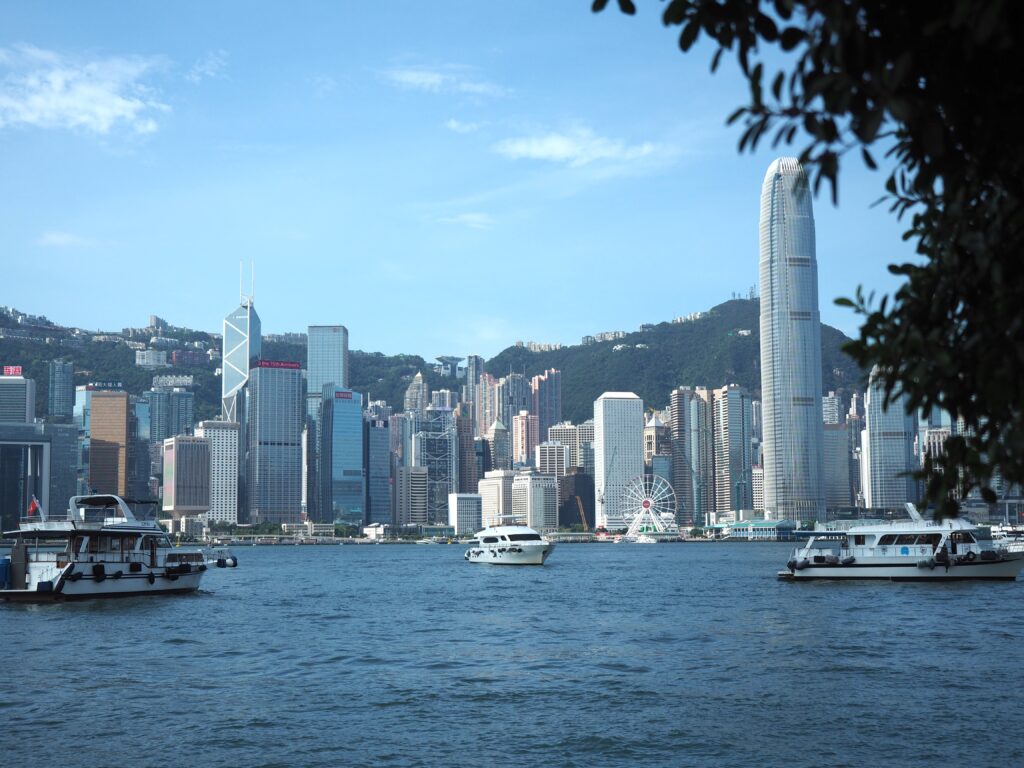
La Avenue of Stars in Hong Kong is a waterfront promenade in Tsim Sha Tsui, that pays tribute to the city’s film industry. Modeled after Hollywood’s Walk of Fame, it features handprints and plaques honoring legends like Bruce Lee and Jackie Chan. The promenade offers a great view of the Hong Kong skyline beyond Victoria Harbour. There is a nightly light show that we never managed to witness in its entierity.
While walking the avenue and the surrounding area, we saw the first red banner celebrating the 75th anniversary of the PRC. I realized we were close to the ferry terminal that crosses the river, so we got in line. We couldn’t find where to pay and thought we might be charged after, so we just hopped on. When we arrived, there was no charge. We later learned that it was free because of the PRC anniversary celebration. So, I can no longer say communism hasn’t benefited me in any way.
Man Mo Temple
Man Mo Temple, located in Hong Kong’s Sheung Wan district, is one of the city’s oldest and most famous temples. Built in 1847, it is dedicated to Man Cheong, the god of literature, and Mo Tai, the god of war. The temple is known for its intricate traditional Chinese architecture, large hanging incense coils, and golden stag.
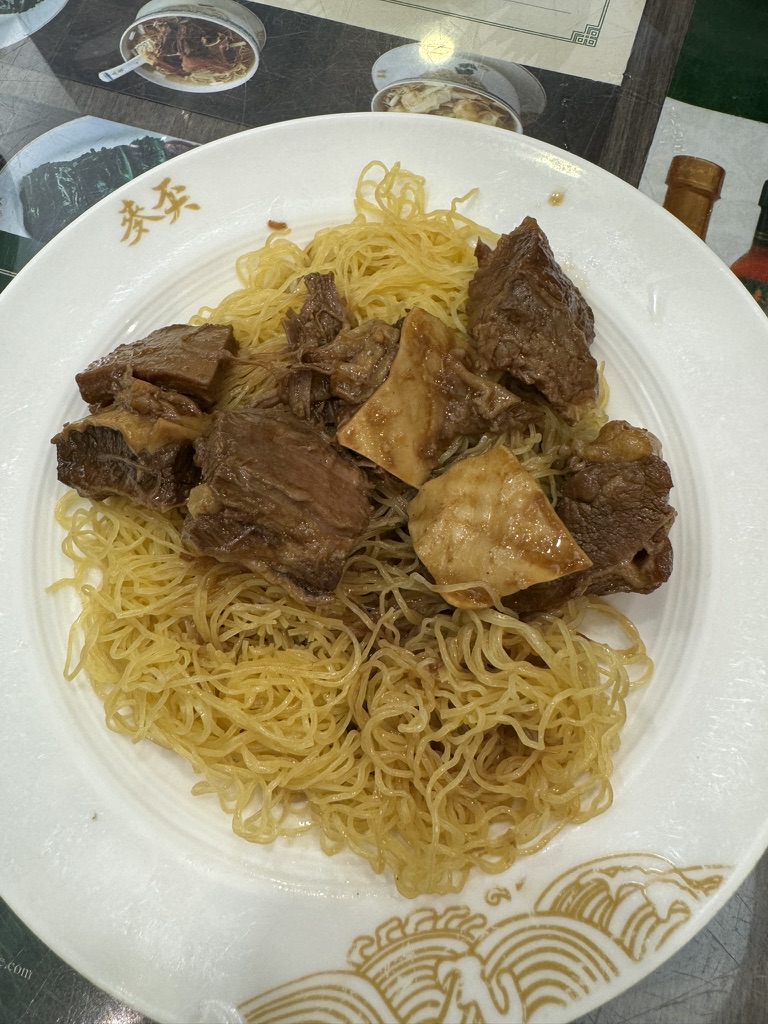
After spending some time in the temple, we walked to a nearby restaurant for lunch. Indi and I got a bowl of noodles. It was simple but very good. We headed back to the hostel to take a nap because we were both exhausted.
People's Republic of China 75th Anniversary Firework Show
The 75th anniversary of the founding of the People’s Republic of China was marked by a fireworks show over Victoria Harbour. We had been told that there would be fireworks by the harbor at 9:00 pm, but that it was super crowded. We decided to go for it. Fireworks were created in China, after all. The celebration drew massive crowds, with thousands of spectators gathering along the waterfront to witness the spectacle. We never got close to the harbor! We were packed like sardines into a traffic jam that lasted the whole night. The press of bodies packed in the road made the warm night swelteringly hot. Due to the overwhelming turnout, crowd control measures were in place, and movement was restricted in certain areas by police to prevent overcrowding. We never made it to a spot where we had a full view. We could see some fireworks over the buildings and trees in front of us. Even without making it to the show, it was a very memorable experience.
After the fireworks ended, we made a beeline for a McDonald’s and got some food. I got a chicken burger that was a lot like a Chick-fil-A sandwich.
Día 2
- Hong Kong Heritage Museum
- Ladies’ Market
- Temple Street Night Market
- Avenue of Stars
Once a defining feature of Hong Kong’s street food culture, hawker stalls are becoming increasingly rare as modernization and regulations reshape the city. These once-thriving vendors, known for serving affordable local dishes, have all but disappeared. If you know where to look, a few still survive in traditional markets and alleyways. We found a handful of hawker stalls on Haiphong Road and chose a place to get breakfast. Indi ordered some kind of roti/pancake dish. I ordered silky eggs (滑蛋), they were simple but good.
Hong Kong Heritage Museum
After breakfast, we decided to take a train to the Hong Kong Heritage Museum. It was an interesting experience because I was largely unfamiliar with Hong Kong’s pop culture. It was free when we visited due to the PRC holiday. Even so, it was mostly empty.
The museum features a range of exhibits, including displays on Cantonese opera, calligraphy, and local folk culture. One of its highlights is the dedicated gallery to Hong Kong’s film industry, showcasing the legacy of stars like Bruce Lee and Jackie Chan. My favorite part was the kung fu movie culture section, especially about Jackie Chan pioneering funny kung fu movies.
There was a huge temporary exhibit on a book series that I had never heard of – Jin Yong’s wuxia novels. Wuxia novels are a genre of Chinese fiction centered around martial arts, chivalric heroes, and their quests for justice. The stories feature skilled martial artists with extraordinary abilities, often set in ancient China, blending historical and fantastical elements. There were impressive statues based on characters from the novels all over the museum.

From the museum, we walked back towards the nearest train station. We had lunch at a place near the train station. I had pork and rice. The pork was so good!
Ladies' Market
We took the train to a station near the Ladies’ Market. We bought an awesome mango mochi at a shop called Mochi Sweets (the link is to a different location) in the station and shared it.
The Ladies’ Market is a busy street market in Mong Kok. It mostly offers clothing, accessories, and souvenirs. I wasn’t interested in what I was seeing, so we didn’t stay long.
Temple Street Night Market
Temple Street Night Market is one of Hong Kong’s most famous street markets. Located in the Yau Ma Tei district, it operates from late afternoon until midnight. Vendors line the street, selling everything from clothes, accessories, electronics, and souvenirs to antiques and trinkets. The market is also well-known for its street food, with stalls and nearby restaurants serving local favorites like seafood, clay pot rice, and noodle dishes. We enjoyed this market more than the last but agreed that Southeast Asia’s markets were usually better than those we had seen in Hong Kong.
Avenue of Stars

We then fast-walked to the harbor to try and catch the 8:00 pm light show. We arrived just as it ended. The skyline at night was hypnotic. We stood at the waterfront taking in the sight for a long time. We bought some truffle-flavored Lays from 7/11 and went back to the hostel. I got into a long conversation with a cool Singaporean roommate that night about Übermensch, Christain existentialism, and more broadly, man’s attempt to make sense of meta ethics in the post modern world
Day 3 - Macao
- Victoria Peak
- The Venecian
- Senado Square
- Ruins of St. Paul’s
Victoria Peak
Victoria Peak is the highest point on Hong Kong Island and one of the city’s most famous attractions. The view from the peak is seriously impressive – one of the best vistas of our trip. The Peak Tram, a historic funicular railway, provides a scenic ride to the top. There are also roads and hiking trails that lead to the summit. We took the tram.
After taking in the view, we took a walk through the neighborhood on the peak. We found a beautiful, little park where we spent some time sitting on a bench, enjoying the day. From that area, there is a view down the other side of the mountain where there were some small, unihabited islands. Peak Road, situated at the summit of Victoria Peak, is recognized as one of the world’s most exclusive addresses. The cheapest condo you could find there would cost you 5 million USD.
Macao
Macao, a Special Administrative Region of China, is a strange blend of Portuguese colonial heritage and Chinese culture. Originally a small fishing village, it became a Portuguese trading post in the 16th century and remained under Portuguese rule for over 400 years before being handed back to China in 1999. Today, Macao is known as the “Las Vegas of the East” due to its thriving casino industry.
We got ferry tickets from Hong Kong to Macao for free through an online offer that Indi found. The ferry over was the nicest ferry of our trip. When we got to Macao, it took some time, but we managed to find a free shuttles to a casino. We hopped on the shuttle to the Venecian.
The Venecian
I changed 200 HKD to MOP. Indi blew $4 on the slots pretty fast and wasn’t happy when I cut her off. Many of the games were unfamiliar and I was more interested in exploring, so we walked to the mall area of the building.
Egg tarts are popular in Macao – a cultural inheritence from the Portugese. I saw online that a bakery called Lord Stow’s Bakery supposedly created the egg tart. So, we went looking for a location within the mall. We had to wait in line for forever. I bought a Godiva ice cream cone while Indi waited and we shared it. I managed to get a table. When I pulled out the tart it had a whole booger on top of it – nose hair and everything. I got it switched for a new one, but my appetite was gone. The lady said she was sorry, but that upon inspection they discovered it was actually a bit of crust, which was a barefaced lie.
After that, we went to Five Guys on a whim. We were walking through the food court area and were suprised o see the chain. We hadn’t had good American food in a long time, so we went all out. It was a huge mistake. I wasn’t even hungry from all the snacking I’d been doing, and yet we each got a burger and fries to share. The burger was mediocre but the fries were good.
After overeating, we took a free shuttle from the Venecian to another of their sister casinos – Sands, which is located on the island of Macao. We wanted to get closer to other attractions, and the shuttle was free. We saw some impressive sights along the way. My favorite building was the Grand Lisboa.
Senado Square
From there, we walked to Senado Square, which is full of Portuguese colonial architecture. Senado Square is the historic heart of Macao, full of colorful European-style buildings. As we walked through the square, we took a look inside St. Dominic’s Church.
Ruins of St. Paul's
We walked up to a historic fort – Monte Fort. Then, almost immediately, we walked into the Macao Museum attached to it. We went through the museum quickly because it was closing soon.
After exiting the museum, we found the Ruins of St Paul’s. The Ruins of St. Paul’s are one of Macao’s most iconic landmarks. It’s a grand stone facade of a 17th-century Catholic church. The facade is all that is left of what was once the largest church in Asia. A fire in 1835 destroyed most of the building, leaving only its intricately carved stone face standing.
La Company of Jesus Square was full of people who had come to see the ruins or explore the colonial-era architecture.
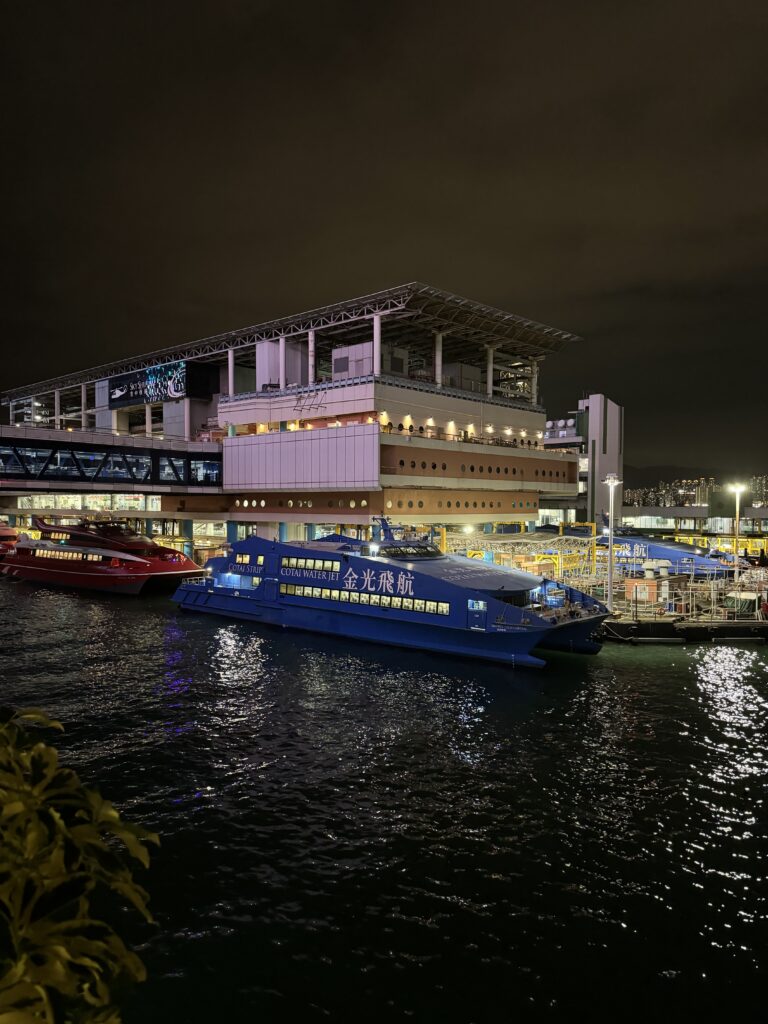
We walked back to the Sands Casino and took the free shuttle to the ferry terminal. We bought tickets and departed shortly after. The tickets to Macao were free, but we had to pay for the return tickets. We walked to the MRT and took it back to the hostel.
We went to dinner at a nearby restaurant so that I could try roasted goose. It was decent – a lot like duck. We chatted with a girl from the UK who was there on business because she has a company that sells luxury spa products. Indi bought her a popsicle because she loves sago.

Next time
On our next adventure, we fly to another of China’s complicated situationships: Taiwan.
